Building Science: Research Proven Best Practices
Our emphasis involves the most current research on indoor-air-quality, energy-efficiency and durability. Healthy, efficient homes begin with control over airflow.
Start with the building envelope, ensuring code minimum or better, levels of air-tightness. This allows control and better ability to meet the current recommended ventilation rates of outdoor-air. Insulation wont work without airtightness and indoor-air, is not healthy without outdoor-air ventilation.
 What is a Building Envelope?
What is a Building Envelope?  The Blower Door Test.
The Blower Door Test.  Outdoor-Air Ventilation
Outdoor-Air Ventilation
Windows
Windows are often the weakest parts in a building envelope but represent the most opportunity. Form, function, energy performance, durability and passive survivability rely on the performance of windows and their integration with the building envelope. Windows are expensive, but unlike most building materials are capable of energy performance paybacks. Current levels of window performance are not matched by most current installation methods.
 Choosing Windows Part 1
Choosing Windows Part 1  Part 2 Window Area & Orientation
Part 2 Window Area & Orientation Part 3 Exterior Materials
Part 3 Exterior Materials
Window Installation Best Practices
Much like insulation is weakened without verifying airtightness, window energy performance is overshadowed by installations leaking water or air. Keeping water out, letting it back out when it get's in, and making everything airtight is not simple but it is easier with some simple techniques.
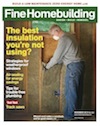
Windows are one of the most vulnerable locations in a home. Water leaks at window openings are one of the most common causes of water damage in homes and buildings. Our Weatherproof Window Installation article appears in the Oct/November '15 issue of Fine Homebuilding. Videos here:
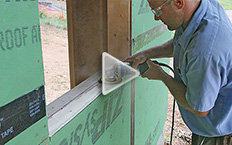
 Episode 1: Prepping the Rough Opening
Episode 1: Prepping the Rough Opening
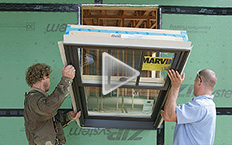
2: Prepping and Installing the Window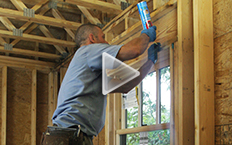 3: Insulation and Air-Sealing
3: Insulation and Air-Sealing
Weather Barriers
Weather barrier failures are responsible for most home destruction and decline. Even small, hidden leaks create mold, mildew and rot, impacting indoor air quality and long term durability. Withouth the right details, thermally efficient homes are more at risk from moisture problems and premature decline.
Older homes often last longer because they have smaller amounts of insulation, which facilitates better drying. With modern levels of insulation, we need better weather barrier details to increase the drying potential of exterior finishes like siding and trim. This helps protect the structure and indoor-air quality. These details also reduce maintenance and extend time between needs like restaining, painting or replacement.
 Top 3 Ways Water Destroys Homes
Top 3 Ways Water Destroys Homes  Rainscreens
Rainscreens  Breathing Walls ?
Breathing Walls ?
Common Building Practices of Concern
Be aware of the common construction pratices that researchers find the most problems with; vented-crawlspaces, combustion appliances inside the building envelope, and attached garages. There are ways of reducing risks with these methods and eliminating them is a good first choice.
 Vented-Crawlspaces Should Be Illegal.
Vented-Crawlspaces Should Be Illegal.  Indoor Combustion
Indoor Combustion  Dangers of Attached Garages
Dangers of Attached Garages
Heating and Cooling
Heating and cooling represents the biggest energy use in homes. Energy efficient building envelopes changes how we look at systems and strategies. Passive solar design is the most cost effective way to heat. High performance building envelopes, solar PV and super efficient heat pumps are being used in cold climates to keep homes comfortable without indoor combustion for similar costs of conventional construction.
 Heating and Cooling in WNC
Heating and Cooling in WNC  3 Forms of Solar Energy For Homes
3 Forms of Solar Energy For Homes  Passive Solar Design
Passive Solar Design
 Choosing Heat Pumps
Choosing Heat Pumps  Geothermal, Ground Source Heat Pumps
Geothermal, Ground Source Heat Pumps  Radiant Floor Heating
Radiant Floor Heating

blog
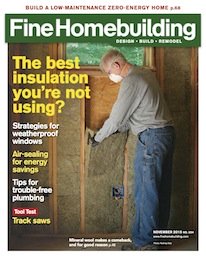
Weatherproof Window Installation
October 27A published article in Fine Homebuilding magazine's issue 254 November 2015. This article tackles the complicated subject of window installation, focusing on preventing water leaks and improving airtightness.
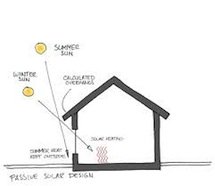
Passive Solar Design
September 17Passive Solar Design is the most efficient way to heat a home and this is the most cost-effective path for measurable performance improvement.